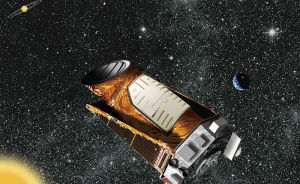
Credit: NASA
Recently, Astronomers announced the discovery of eight new planets that could possibly support life. They met the criteria of being in the “Goldilocks Zone,” meaning that they were very close in size and distance from their sun to earth.
NASA’s Kepler Mission, which has already discovered hundreds of Earth-like planets, is designed to survey our region of the Milky Way galaxy to discover more of these Earth-like planets in the Habitable Zone, and to find the fraction of the billions of stars in our galaxy that might have similar planets.
These worlds have to meet certain standards to be considered a candidate for being “Earth-like” and compatible with liquid water. In order to be considered Earth-like, a planet must be within a certain size range, be within a certain distance from its sun, and should usually be rocky.
In its fifth year of looking for the shadows of planets glimmering past other stars, Kepler has been successful in finding more and more planets with the possibility of holding life.